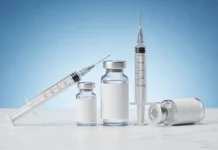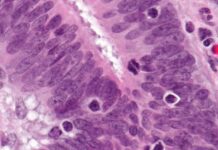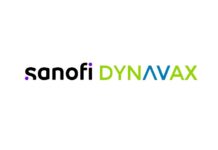Amgen announced that The Lancet published results from a Phase 3 randomized, double-blind, placebo-controlled study of Nplate in children with symptomatic immune thrombocytopenia.
The study showed that 52 percent of Nplate patients achieved a durable platelet response, compared with 10 percent of placebo-treated patients (p=0.002, odds ratio 9.1, 95 percent CI: 1.9, 43.2).
“Children with ITP are at risk for serious bleeding events due to low platelet counts, which can be very frightening for these children and their parents,” said Michael D. Tarantino, M.D., The Bleeding and Clotting Disorders Institute, professor of Pediatrics and Medicine, University of Illinois College of Medicine-Peoria, Peoria, Illinois. “The results of this study suggest that romiplostim could reduce the frequency and severity of bleeding events for children suffering from symptomatic ITP, thus providing them with another potential treatment option.”
“The study met the primary endpoint of durable platelet response and showed that children who were treated with Nplate had increased rates of overall platelet response, and patients who responded to Nplate maintained consistently elevated platelet counts. These findings demonstrate that Nplate may be a potential treatment option for children with symptomatic ITP of more than six months duration. The most frequently reported adverse events (AEs) included contusion, epistaxis, headache and upper respiratory tract infections. The overall safety profile observed in the Nplate arm was similar to the known safety profile of Nplate.
“Nplate helps bone marrow produce more platelets, which in turn helps prevent bruising and bleeding which is important for children faced with this condition. These data are important in understanding how Nplate may play a role in helping children manage this disease,” said Sean E. Harper, M.D., executive vice president of Research and Development at Amgen. “We will work with regulatory authorities towards an approval for Nplate for pediatric patients.”
The treatment goal for children with ITP is to promote a platelet count that maintains appropriate control of bleeding,1 improve symptoms and increase the number of platelets.2
ITP is a rare, serious autoimmune disease characterized by low platelet counts in the blood (a condition known as thrombocytopenia) and impaired platelet production.2,3 In the United States (U.S.), an average estimate of the incidence in children is 5 cases in 1,000 each year.4
About the Phase 3 Study This Phase 3 double-blind study randomized 62 children who have had ITP for more than six months to weekly Nplate or placebo (2:1) for 24 weeks. Durable platelet response, the primary endpoint of the study, was defined as achieving weekly platelet responses (increased platelets) without rescue medication in at least six of the final eight weeks.
Secondary endpoints of the study included the evaluation of overall platelet response, the total number of weekly platelet responses, the use of ITP rescue medications, composite bleeding episodes and the overall safety of Nplate. Exploratory endpoints included the evaluation of bleeding incidence and changes in patient reported outcomes. Rescue medication was defined as any medication intended to increase platelet counts or prevent bleeding, and any increase in dose, frequency or additional therapy was categorized as rescue medication. Patients entering the study were permitted to use the same standard-of-care therapy, dose and schedule from when screening platelet counts were measured.
By the final eight weeks of the study, noncutaneous bleeding had decreased with Nplate, and rates of durable platelet response were 52 percent compared to 10 percent with placebo (p=0.002, odds ratio 9.1, 95 percent CI: 1.9, 43.2). Rates of overall platelet response with Nplate were 71 percent (30/42) compared with 20 percent with placebo (p=0.0002, odds ratio 9.0, 95 percent CI: 2.5, 32.3), and rates of any platelet response were 81 percent (34/42) with Nplate compared to 55 percent (11/20) with placebo (p=0.0313).
The overall safety profile on the pediatric subjects who received Nplate in this study was similar to the known safety profile of Nplate. The most frequently reported AEs included contusion, epistaxis, headache and upper respiratory tract infections. Oropharyngeal pain occurred more frequently with Nplate [26.2 percent (11/42) vs. 5.3 percent (1/19) in placebo-treated patients]; of the 11 patients treated with Nplate with oropharyngeal pain, streptococcal pharyngitis (n=2), allergic rhinitis (n=2), gastroesophageal reflux (n=1) and serum sickness from IVIg (n=1) were also reported. No oropharyngeal pain AEs were serious or considered treatment-related. No patients died and none withdrew due to AEs.
Serious adverse events (SAEs) were seen in 23.8 percent of Nplate patients and 5.3 percent of placebo patients. SAEs seen in the Nplate arm included epistaxis, contusion and headache (n=2 each), bronchiolitis, nausea, petechiae, epilepsy, fever, thrombocytosis, urinary tract infection and vomiting (n=1 each). One subject with treatment-related SAEs experienced headache and thrombocytosis, which did not recur when romiplostim was restarted. There were no thrombotic events reported in the study.
About Nplate® (romiplostim) Nplate is a thrombopoietin receptor agonist indicated for the treatment of low blood platelet counts in adults with chronic immune thrombocytopenia (ITP), who had an insufficient response to other medicines or surgery. Nplate mimics the body’s natural thrombopoietin and is designed to increase platelet counts in patients with chronic ITP.5
Nplate is the first FDA-approved treatment specifically for adult chronic ITP. It is also being investigated for potential use in children ages 12 months to 18 years old with chemotherapy-induced thrombocytopenia.
In the U.S., Nplate is indicated for the treatment of thrombocytopenia in patients with chronic ITP who have had an insufficient response to corticosteroids, immunoglobulins or splenectomy. Nplate is not indicated for the treatment of thrombocytopenia due to myelodysplastic syndrome (MDS) or any cause of thrombocytopenia other than chronic ITP. Nplate should be used only in patients with ITP whose degree of thrombocytopenia and clinical condition increase the risk for bleeding. Nplate should not be used in an attempt to normalize platelet counts.
In the European Union (EU), Nplate is indicated for the treatment of adult chronic ITP patients who are refractory to other treatments (e.g., corticosteroids, immunoglobulins).
Nplate was named as a recipient of the U.S. Prix Galien 2009 “Best Biotechnology Product” award and also received the 2009 Scrip Awards for “Best New Drug.” Nplate has also been honored with numerous awards throughout the EU, including a 2010 Prix Galien in France in the category of “Drugs for Rare Diseases,” and the 2011 Prix Galien in Germany in the category of “Specialist Care.” In September 2010, Nplate was awarded the 2010 International Prix Galien Award, an award granted every two years which recognizes the “Best of the Best” selected from previous national Prix Galien award recipients.
Nplate is also approved in Canada, Australia, Russia, Mexico, Switzerland, Lichtenstein, Japan, Argentina, Israel, South Korea, Hong Kong, Chile, Serbia, Kazakhstan, Malaysia, Singapore, Colombia, Kuwait, Taiwan, South Africa, Brazil, Guatemala, Morocco, Ecuador, Macau, Egypt, Lebanon, Peru and Venezuela. Nplate has received orphan designation for chronic ITP in the U.S. (2003), the EU (2005), Switzerland (2005), Japan (2006), Mexico and South Korea (2010).
For more information about Nplate, please visit www.Nplate.com


















